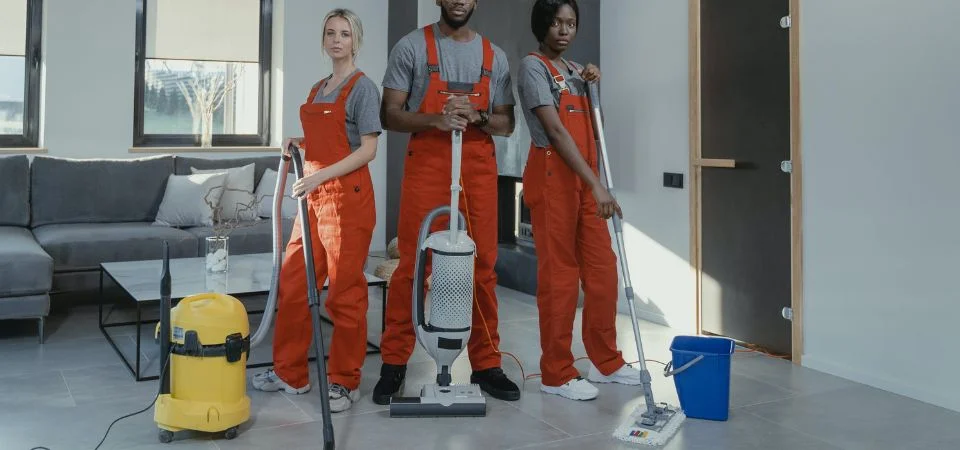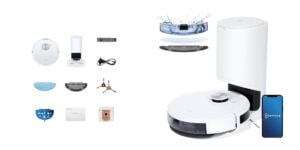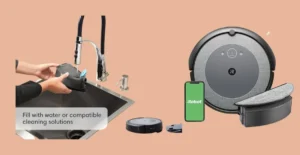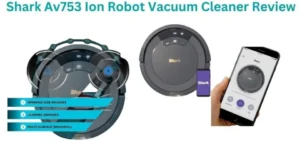Hey guys today we are discussing about best vacuum cleaner in the USA market. We also discuss several types of vacuums and the history of vacuum cleaners. Are you searching for the perfect vacuum cleaner? which vacuum cleaner are the best for your home? Receive the best Vacuum cleaner for your needs. I will explain all types of vacuum cleaning that help to choose the right vacuum cleaner. There are a lot of options available in the marketplace.
How does a vacuum cleaner work?
Even if it is not our life partner, we all know this device is called a vacuum cleaner. Commercial vacuum cleaners began in 1908 when American inventor James Spangler sold a patent for a vacuum cleaner to William Hoover. And so, in America, this machine is still called Hoover. With the evolution of time, some of the most advanced vacuum cleaners have now reached us. Our today’s arrangement is arranged with some vacuum cleaners currently available in the market. There are also some tips for buying and using.
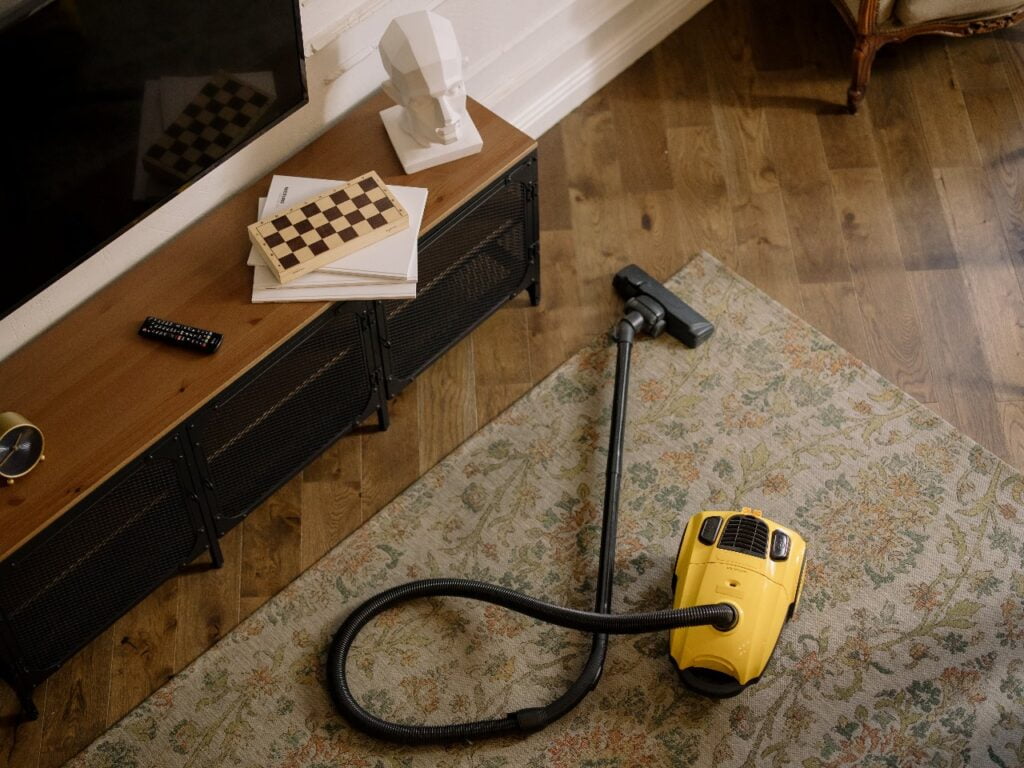
Vacuum definition
In physics, a vacuum definition is a space devoid of matter, particularly a space devoid of air or other gases. It is a region where the pressure is significantly lower than atmospheric pressure, resulting in a lack of particles. In everyday language, a vacuum is often associated with a space that is empty or devoid of any substance. The absence of matter in a vacuum allows for certain physical phenomena, such as the absence of air resistance or the propagation of electromagnetic waves.
What Is Vacuum Definition?
Vacuum cleaners are modern electric devices that use suction to remove dirt from floors, sofas, beds, and other surfaces. In vacuum cleaners, the suction system is built with an electric motor and a control panel is attached to control the suction system.
The “best” vacuum brand can vary based on individual preferences, needs, and budget. However, some well-regarded vacuum cleaner brands include:
| Name | Specification | Types |
|---|---|---|
| Dyson | Known for innovative designs and powerful suction technology | 01. Upright Vacuum Cleaner 02. Canister Vacuum Cleaner 03. Cordless models Vacuum |
| hark | Gained popularity for providing strong suction and versatile cleaning options. | 01. Upright Vacuum Cleaner 02. Canister Vacuum Cleaner 03. Cordless models Vacuum |
| Miele | A German brand known for manufacturing high-quality and durable vacuum cleaners. | 01. canister vacuum models |
| Hoover | A well-established brand with a wide range of vacuum cleaners | 01. Upright Vacuum Cleaner 02. Canister Vacuum Cleaner 03. Cordless models Vacuum 04. And Offers various models catering to different needs and budgets |
| Bissell | Known for affordable and effective cleaning solutions | 01. Upright Vacuum Cleaner 02. Canister Vacuum Cleaner 03. carpet cleaners |
| Electrolux | Known for innovative features and strong performance | Offers a diverse range of vacuum cleaners with a reputation for quality |
| iRobot (Roomba) | Popular for autonomous cleaning with smart navigation capabilities. | A leader in the robot vacuum industry, known for its Roomba series. |
| Kirby | Often praised for longevity and effective carpet cleaning | 01. Upright vacuum cleaners. |
| Riccar | Recognized for powerful suction and durability | 01. Upright 02. Canister Vacuum Cleaners. |
| Kenmore | Known for providing reliable and affordable options | A German brand is known for manufacturing high-quality and durable vacuum cleaners. |
| Tineco | FreeStnd Install-free Base Protects Walls | There are available All types of vacuums at low prices. |
It’s essential to consider factors such as the type of flooring in your home; whether you have pets, your budget, and any specific features you prioritize (such as bagless design, cordless operation, or specialized attachments). Reading customer reviews and considering expert opinions on specific models can also help you find the best vacuum for your needs.
How does a vacuum cleaner work
A vacuum cleaner works by creating a partial vacuum, which sucks in air and any particles or debris along with it. Here’s a basic explanation of how a typical vacuum cleaner operates:
Motor and Fan | The vacuum cleaner contains an electric motor that drives a fan. This fan is responsible for creating suction by drawing in air. |
Suction | The electric motor generates suction by creating a low-pressure area within the vacuum cleaner. This low-pressure zone causes air to rush into the cleaner, bringing along dust, dirt, and other debris. |
Filters | The incoming air passes through various filters designed to trap particles. Common filters include a pre-filter, a motor filter, and a HEPA (High-Efficiency Particulate Air) filter. |
Dust Collection | The trapped particles are collected in a dustbin or a bag. Bagged vacuum cleaners store the debris in disposable bags, while bagless models have a dustbin that can be emptied and reused. |
Exhaust | The filtered air is then expelled back into the room through an exhaust vent. The filters ensure that only clean air is released. |
Attachments | Vacuum cleaners often come with various attachments like brushes and nozzles to facilitate cleaning different surfaces and reaching into corners. |
Roller Brush (for some models) | Many vacuum cleaners, especially those designed for carpets, have a roller brush or beater bar. This component helps agitate and lift dirt from carpet fibers, making it easier for the suction to capture the debris. |
Overall, the combination of suction, filtration, and cleaning attachments makes a vacuum cleaner effective at removing dirt and debris from floors, carpets, and other surfaces in your home.
Vacuum Cleaner Variables
Several variables come into play when considering and using a vacuum cleaner. Here are some key factors:
Suction Power | Suction power is a measure of how effectively the vacuum cleaner can pull in air and debris. It depends on the strength of the motor and the overall design of the vacuum. |
Filtration System | The filtration system determines how well a vacuum cleaner captures and retains particles. High-quality filters, such as HEPA filters, are effective in trapping small particles, making the air expelled cleaner. |
Dustbin or Bag Capacity | The capacity of the dustbin or bag affects how much debris the vacuum cleaner can hold before needing to be emptied or replaced. |
Type of Vacuum | There are various types of vacuum cleaners, including upright, canister, stick, handheld, and robotic models. Each type has its advantages and is suitable for different cleaning tasks and environments. |
Power Source | Vacuum cleaners can be corded or cordless. Corded models have a constant power source, while cordless ones rely on rechargeable batteries. The choice depends on the user's preference and the flexibility needed for cleaning. |
Attachments and Accessories | The availability of different attachments, such as brushes, nozzles, and extension wands, enhances the vacuum cleaner's versatility for cleaning various surfaces and hard-to-reach areas. |
Brush Type (for some models) | Vacuums designed for carpets may have different brush types, such as roller brushes or beater bars, which help agitate and lift dirt from carpet fibers. |
Weight and Maneuverability | The weight and maneuverability of a vacuum cleaner are crucial for ease of use. Lighter models are generally easier to handle, especially when moving between rooms or up and down stairs. |
Noise Level | The noise level of a vacuum cleaner can be an important consideration, especially in environments where quieter operation is preferred. |
Allergen Considerations | For individuals with allergies, the vacuum's ability to capture and retain allergens, as well as the type of filtration system used, becomes a significant variable. |
Considering these variables can help you choose a vacuum cleaner that best suits your specific cleaning needs and preferences.
What Is A Robot Vacuum And How Does It Work?
A robot vacuum, also known as a robotic vacuum cleaner, is an autonomous cleaning device designed to automatically clean floors without direct human intervention. Here’s a basic overview of how a typical robot vacuum works:
01. Navigation System: Robot vacuums are equipped with sensors and navigation systems to move around a room intelligently. These systems can include infrared sensors, laser sensors, cameras, and more. They help the robot navigate, avoid obstacles, and map the cleaning area.
02. Brushes and Suction Mechanism: Robot vacuums have built-in brushes and a suction mechanism to capture dirt, dust, and debris. These components are usually located underneath the robot.
03. Dustbin: The collected dirt is stored in a dustbin within the robot. The size of the dustbin varies among different models, and it needs to be emptied regularly.
04. Battery and Charging Dock: Rechargeable batteries power robot vacuums. They are designed to return to a charging dock automatically when the battery is low or when the cleaning task is complete.
05. Charging Contacts: The charging dock and the robot have metal contacts that connect when the robot is correctly aligned on the dock. This allows the battery to recharge for the next cleaning cycle.
06. Programming and Control: Robot vacuums can be programmed to operate on a schedule, allowing them to clean at specific times, such as when homeowners are away. Many models can be controlled and monitored through smartphone apps or voice commands.
07. Obstacle Detection: Sensors on the robot detect obstacles such as furniture, walls, and stairs. The vacuum adjusts its cleaning path accordingly to avoid collisions and falls.
08. Edge and Corner Cleaning: Some robot vacuums are equipped with edge-cleaning brushes or special cleaning modes to effectively clean along edges and in corners.
09. Filter System: Robot vacuums often have filters to trap dust and allergens. High-quality models may include HEPA filters for improved air quality.
10. Remote Control and Smart Connectivity: Many robot vacuums come with remote controls for manual operation. Additionally, they often have smart connectivity features, allowing users to control and monitor the device through mobile apps or integrate it with smart home systems.
Robot vacuums are a convenient solution for maintaining clean floors with minimal effort. They are particularly useful for daily light cleaning and complement traditional vacuuming routines. The effectiveness of a robot vacuum depends on factors such as its design, features, and the layout of the cleaning area.
Types Of Vacuum Cleaner
Upright vacuum cleaner:
These models are relatively steep, the oldest, most commonly seen, and one of the most popular vacuum cleaners in the USA. It can be tilted and pushed very easily. It is ideal and most powerful for cleaning large carpets. It has a sensor that effectively absorbs the lint and dirt left on the carpet. It has different settings for cleaning the floor.
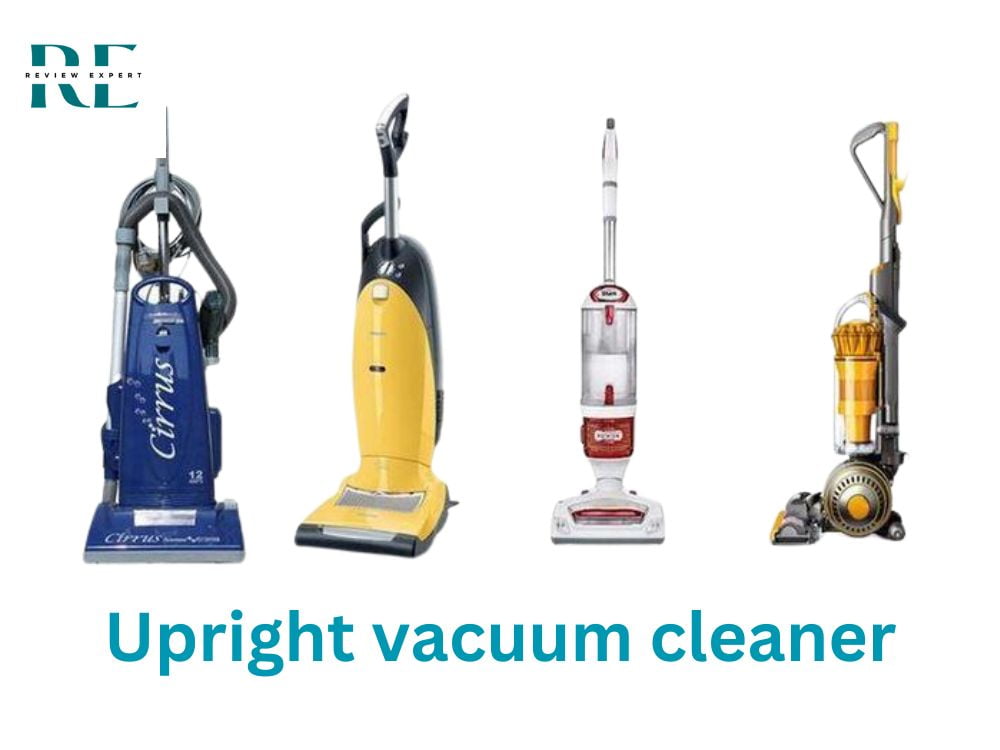
Stick vacuum cleaner:
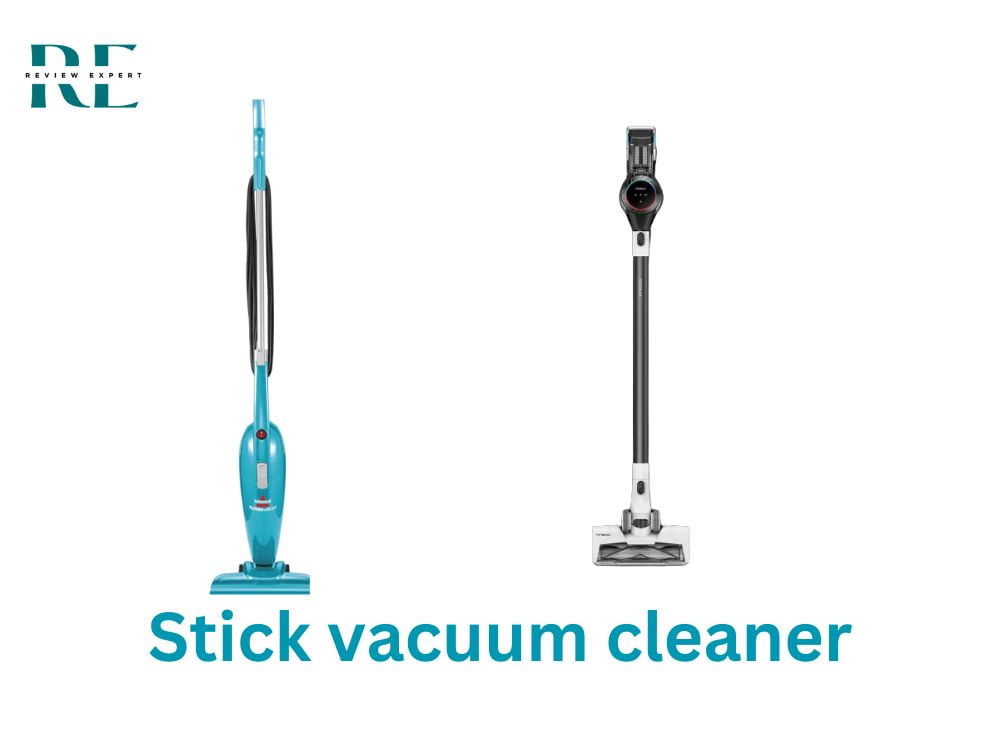
It is stick-shaped thin, light, and used for fast cleaning. Similarity can be found in its design with conventional brooms. This type of cleaner is good for cleaning furniture and confined spaces. It can be used for cleaning small carpets and floors and is ideal for cleaning kitchens and bathrooms. It has a dirt cup instead of a filter bag. It is not very strong and is not suitable for deep cleaning. Its battery backup is less than other types.
Canister Vacuum Cleaner:
A canister-type cleaner consists of a cylinder and a suction pipe attached to it. It can have more than one motor. It can be used almost everywhere. It is very useful for bare hard floors, carpeted areas, wooden floors, tiles, cars, stairs, walls, ceilings, corners, and upholstery – furniture, curtains, etc. It has many attachments that apply to different places. It is relatively expensive due to its versatile utility. It is also larger than other models.
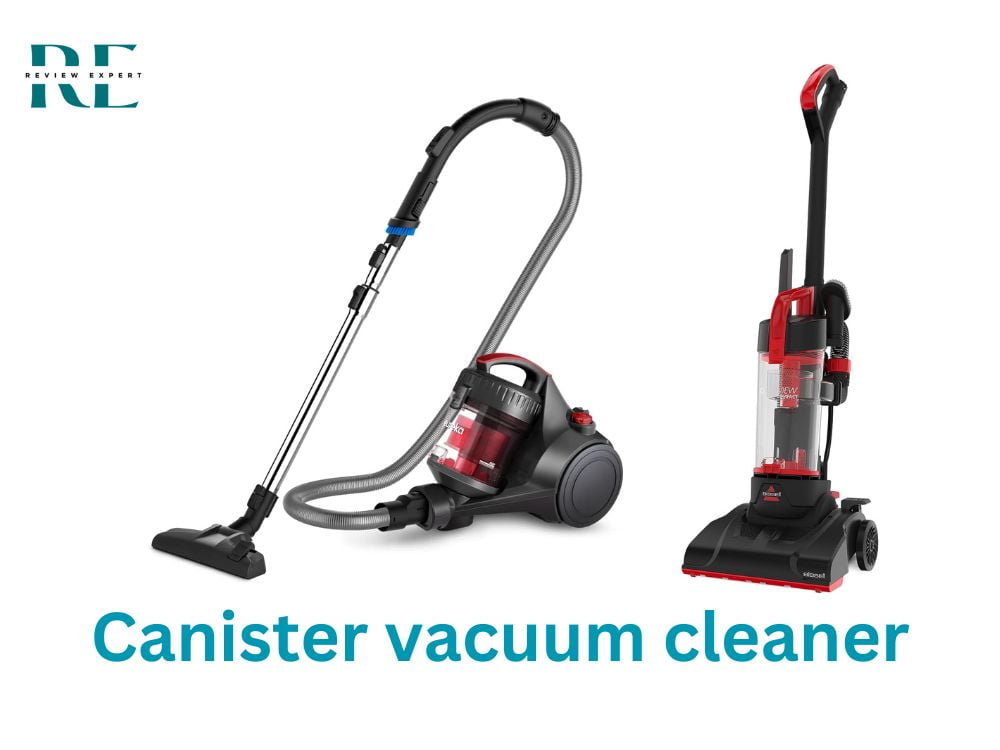
Robotic vacuum cleaner
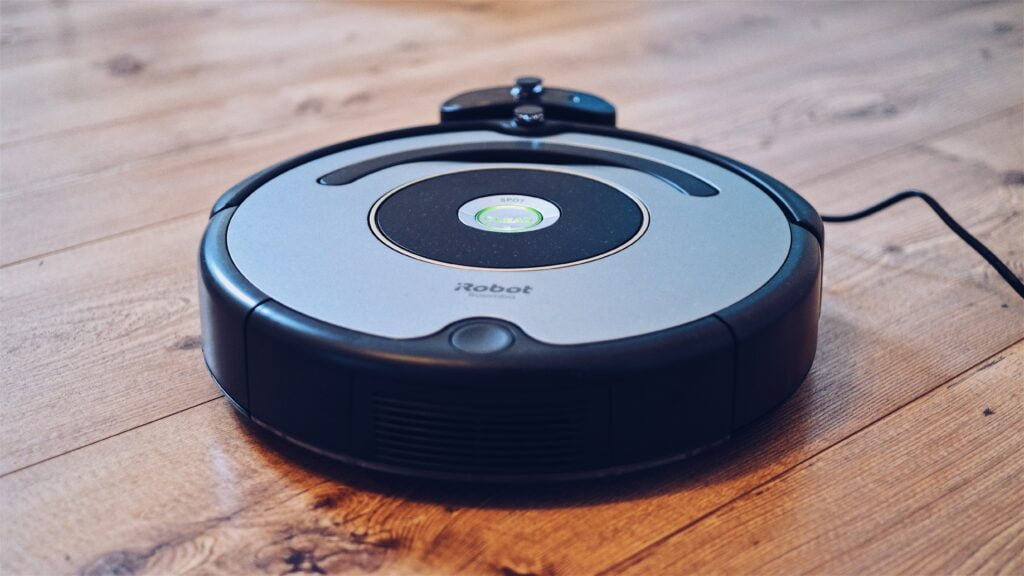
A robotic vacuum cleaner is a stand-alone vacuum cleaner that has a programmable controller with sensors and a robotic drive and can work through cleaning routines. Some models use a spinning brush to reach smaller corners. More recent models use AI and deep learning for mapping, object detection, and event-based cleaning.
They make less noise and are easier to use. Robotic vacuums are typically smaller than upright vacuums and weigh significantly less than even the lightest canister models. However, one downside of a robotic vacuum cleaner is that it takes a long time to vacuum an area due to its size. They are relatively expensive, and their parts and batteries cost significantly more.
Portable vacuum cleaner
It is a small, easy-to-carry, lightweight vacuum cleaner, perfect for one-handed cleaning. Available in different designs – both corded and cordless. Some of these models have rotating brushes. It is great for cleaning tight spaces. Such as car interiors, tables, stairs, and corners of the room that are hard to reach.
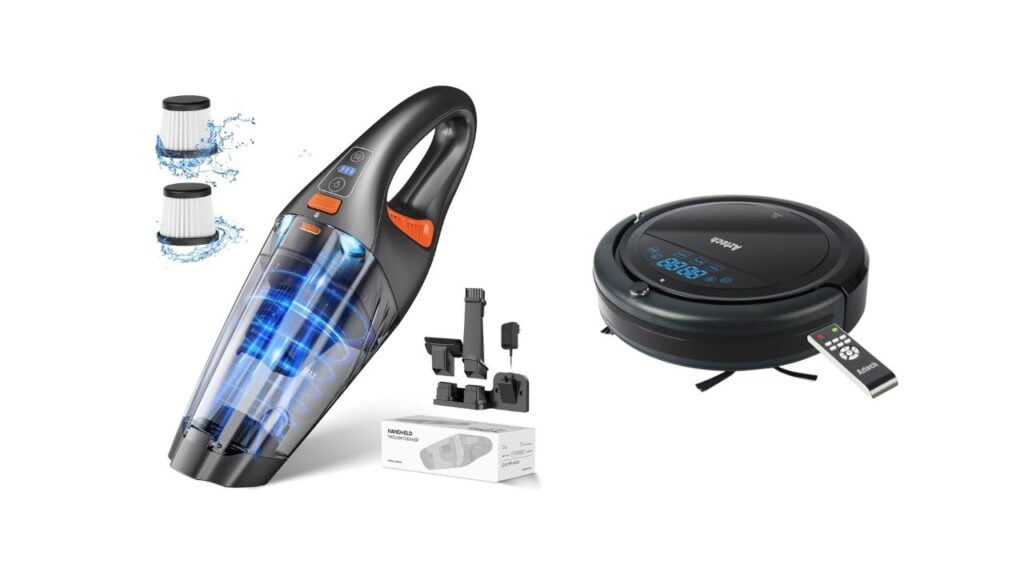
It is less powerful than larger vacuums and is not used for general floor cleaning. It can be used to remove fine dirt such as hair on upholstery, to clean out dirt and grime. It is less expensive than other models.
Why buy a vacuum cleaner?
We all want to live in a healthy environment. Cleaning the house with it will keep your house more dust-free than cleaning the house in the usual way. If you have a carpet or something similar to carpet in your room, this will prove to be very effective. Almost all vacuum cleaners available today are very modern. This cleaner looks very attractive and will enhance the beauty of your home.
A vacuum cleaner is essential if you want to keep your home safe for small children. Many specks of dirt escape our eyes. But these come easily to small children especially those who crawl. Pets are an integral part of many of our lives. But animal dander is not only annoying; it can be dangerous if someone in the family has allergies. Vacuuming can help reduce allergens in your home and improve overall air quality.
Vacuum cleaners are not only effective at cleaning dust and getting rid of allergens, but they are also easy to use and save energy. Also, you will get several world-class vacuum cleaners under just ten thousand rupees. This cost is negligible compared to the time and energy you will save cleaning your house. The rest of the time you can use for your work, rest and family.
Some suggestions for purchasing
Choose the convenient one for you
- Stick or upright vacuum cleaners are best for the home due to their easy-to-use method.
- Portable vacuums are best for cleaning cars or electronics.
- For offices or large industries, it is not advisable to take anything other than a canister vacuum. Two or three pea canister vacuums are readily available in the market.
- Robotic vacuum cleaners are primarily designed for homes. In terms of its performance, other vacuums will be ahead of it. It can also prove good for you if properly planned and used.
Choosing the Right Vacuum Cleaner
- When selecting a vacuum cleaner for your home, there are several factors to consider. One important consideration is the type of flooring you have in your house. Different flooring types require different cleaning strategies, so it’s essential to choose a vacuum cleaner that can effectively clean your specific flooring.
- If you have a mix of carpeted and hard floors, look for a vacuum cleaner that offers versatile cleaning options. Some models come with adjustable brush heights or settings for switching between carpet and hard floor modes.
- For carpeted floors, consider a vacuum cleaner with a rotating brush or a motorized power head, as these features help in deep cleaning and removing trapped dirt and pet hair from the carpet fibers.
- On the other hand, for hard floors including hardwood, tile, or laminate, opt for a vacuum cleaner with a soft bristle brush. This prevents scratching or damaging delicate surfaces while ensuring efficient dirt and dust pickup.
- In terms of bagged or bagless vacuum cleaners, both options have their advantages. Bagged vacuum cleaners tend to be more hygienic and are a good choice for allergy sufferers, as they contain dust and debris securely in the bag. Bagless vacuums, on the other hand, offer the convenience of not needing to replace bags and allow you to see when the dust canister needs to be emptied.
- When choosing a vacuum cleaner, consider the key features that align with your cleaning needs. Look for features such as suction power, maneuverability, attachments, and filtration systems to ensure effective cleaning.
- By considering these factors and selecting the right vacuum cleaner for your home, you can ensure a clean and healthy living environment.
Check these points before buying
- Suction power, the higher the better, these are usually in Pa, Psi units
- Take the motor power, higher than the minimum value, for Watts (W).
- It is peaceful to use if the sound intensity is low
- Choose the design and structure as you like
- Learn about filter types and cleaning methods
- Check if other accessories fit properly
Some instructions for operating a vacuum cleaner:
1. Knowing how to clean floors and furniture is important. If you notice that the dust is not as clean as you expect, it may be that your vacuum cleaner is not being used properly. Here are some useful tips for using a vacuum cleaner the right way:
2. There is no alternative to cleaning its interior regularly to keep it in good condition. So open and clean once a weekend.
3. Be sure to empty the vacuum bag before it is full.
4. If you want to get the most out of your vacuum, clean the filters regularly
Best Practices For Vacuuming
Another important consideration is the frequency of vacuuming. It is recommended to vacuum high-traffic areas at least twice a week, such as living rooms and hallways. Other areas with less foot traffic, like bedrooms and guest rooms, can be vacuumed once a week. By vacuuming regularly, you can prevent dirt and dust buildup and maintain a cleaner and healthier living environment.
To maximize the efficiency of your vacuuming, there are a few additional tips to keep in mind. Make sure to empty the vacuum bag or canister when it is half full to maintain optimal suction power. Regularly clean or replace the filters to prevent clogging and maintain the vacuum’s performance. Do not forget to vacuum hard-to-reach areas, such as corners, edges, and under furniture, where dirt and dust tend to accumulate. Lastly, consider using vacuum accessories, like a crevice tool or upholstery attachment, to clean hard-to-reach or delicate areas in your home.
Which should always be done:
1. Always unplug after cleaning.
2. Be sure to follow the manufacturer’s handbook.
3. Handle your vacuum cord with care, avoiding strain.
4. Keep large items such as socks and coins off the floor to avoid obstructions.
What to never do:
1. Do not continue using the vacuum cleaner if it emits unusual noises or smells. Close and clear it and try again after a while.
2. Do not attempt to repair your vacuum yourself. Always seek professional advice.
3. Do not reuse paper vacuum bags, as the holes will become blocked after one use. Reusing them may cause the vacuum motor to overheat.
How to use a vacuum cleaner?
Step 1: The dirt or dust should be removed with a duster when using vacuum cleaners.
Step 2: Move the furniture aside as needed so that you can easily clean your spaces using the vacuum cleaner.
Step 3: Remove large and tough dirt before using a vacuum cleaner. Because large and hard dirt can get inside the vacuum cleaner and damage its motor.
Step 4: Check if the vacuum cleaner bag is properly attached.
Step 5: Use a vacuum cleaner with a specific size nozzle as needed. Attach the nozzle of the vacuum cleaner well.
Step 6: Connect the vacuum cleaner to electricity and turn on the switch. And in the case of rechargeable vacuum cleaners, fully charge them and switch them on.
Step 7: Now, start the cleaning process with the vacuum cleaner at a slow speed. Every once in a while check to see if the vacuum cleaner bag is full.
Step 8: When the dust bag of the vacuum cleaner is full, it should be cleaned.
Best vacuum cleaner for carpet
Vacuum cleaning is an essential part of proper carpet care for your home. It helps to remove surface dirt and debris, keeping your carpets looking clean and fresh. However, when it comes to removing stains and odors from carpets, a vacuum cleaner alone may not be enough.
To effectively remove stains, you can use specialized carpet stain removers or a mixture of mild detergent and water. Gently blot the stain with a clean cloth or sponge, avoiding rubbing which can spread the stain further. Rinse the area with clean water and blot dry.
For odors, sprinkle baking soda over the affected area and let it sit for a few hours before vacuuming it up. Baking soda helps to absorb and neutralize unpleasant smells. You can also use a carpet deodorizer specifically designed to eliminate odors.
In addition to regular vacuuming, deep cleaning your carpets periodically is recommended. This can be done by using a steam cleaner or hiring a professional carpet cleaning service. Deep cleaning helps to remove embedded dirt and allergens, improving the overall cleanliness and air quality of your home.
Addressing Hardwood and Tile Flooring
Hardwood floors add warmth and elegance to any home, but they require regular cleaning and polishing to maintain their shine. To keep them looking their best, vacuuming is a crucial step. Opt for a vacuum cleaner with specialized hardwood attachments to prevent scratching the surface. Avoid using rotating brush heads, as they can leave marks on the floor. Instead, choose a vacuum with smooth floor settings or a soft brush attachment. Remember to empty the canister regularly to maintain suction power. For a deeper clean, consider using a hardwood floor cleaner after vacuuming. This will help remove any stubborn dirt or grime. Additionally, to restore the natural luster of the wood, polishing with a high-quality hardwood floor polish is recommended every few months.
When it comes to tile floors, both dry and wet vacuuming can be effective cleaning methods. For dry vacuuming, use the hard floor attachment or set the vacuum to the bare floor mode to prevent scratching. This will help remove dust, pet hair, and other debris without causing damage. However, for more thorough cleaning, wet vacuuming is recommended. Simply attach a wet mop to your vacuum cleaner and go over the tile floor. This will help remove stains and spills, leaving your tiles gleaming. Remember to use a mild, non-abrasive cleaner suitable for tile floors. Avoid excessive moisture and ensure the floor is completely dry after cleaning to prevent slipping.
Handling Special Cleaning Situations
Vacuum cleaners are essential for keeping our homes clean and free from dust and dirt. However, there are special cleaning situations that require specific handling. One such situation is vacuuming pet hair and dander. Pets are a part of our families, but their shedding can create a lot of mess and allergens in our homes. To effectively manage pet hair and dander, it is important to choose a vacuum cleaner that is specifically designed for this purpose.
Look for a vacuum cleaner that has strong suction power and a specialized pet hair attachment or brush. These attachments are designed to easily pick up pet hair from carpets, upholstery, and hard floors. Additionally, consider a vacuum cleaner with HEPA filtration technology. HEPA filters can capture tiny particles such as pet dander, pollen, and dust mites, helping to improve indoor air quality and reduce allergies.
In conclusion, when it comes to handling special cleaning situations like vacuuming pet hair and dander, choosing the right vacuum cleaner is crucial. Look for strong suction power, specialized pet hair attachments, and HEPA filtration to effectively manage allergens and keep your home clean.
Vacuum Cleaners for Specific Needs
A vacuum cleaner is an essential tool for keeping your home clean and dust-free. When it comes to specific needs, there are various options available that cater to different requirements. For individuals suffering from allergies, it is important to choose a vacuum cleaner that is designed to effectively remove allergens from the air. These vacuums typically come with HEPA filters, which capture tiny particles such as dust mites, pollen, and pet dander, ensuring cleaner air quality in your home.
For those living in small spaces and apartments, compact and lightweight vacuum cleaners is the ideal choice. These vacuums are easy to maneuver and store in tight spaces, without compromising on cleaning power. Additionally, they often come with specialized attachments that allow you to clean hard-to-reach areas and upholstery with ease.
When shopping for a vacuum cleaner, consider the specific needs of your home and choose a model that best fits your requirements. Whether you need a vacuum for allergy sufferers or a compact option for a small space, there are plenty of options available to meet your needs.
Troubleshooting Common Vacuum Cleaner Issues
A common issue with vacuum cleaners is a loss of suction, which can make cleaning a frustrating task. There are several causes behind this problem, but fortunately, there are simple solutions as well. One common cause is a clogged hose or brush, which can reduce airflow and suction power. To deal with this, check the hose and brush regularly and remove any blockages. Another possible cause is a full dust bag or container, which can restrict airflow. Empty the bag or container regularly to maintain optimal suction. Additionally, check the filters for dirt and debris as clogged filters can also impact suction. Clean or replace the filters as needed. Lastly, inspect the vacuum cleaner for any damaged or worn-out parts such as belts or seals, as these can affect suction performance. Replace any faulty parts to restore full suction power.
Eco-friendly Vacuuming Practices
Vacuuming is an essential part of maintaining a clean and healthy home environment. To ensure that your vacuuming practices are eco-friendly, there are a few tips you can follow. One important aspect is to choose an energy-efficient vacuum cleaner. These cleaners are designed to use less electricity, reducing their impact on the environment. Look for models with the ENERGY STAR label, as they meet strict guidelines for energy efficiency.
In addition to using an energy-efficient vacuum cleaner, there are other ways you can make you’re cleaning routine more eco-friendly. When vacuuming, be mindful of the amount of energy you use by avoiding unnecessary power settings. Use the appropriate suction level for each surface to optimize energy consumption. You can also save energy by unplugging the vacuum cleaner when it’s not in use and avoiding excessive running time.
Furthermore, consider using eco-friendly vacuum cleaner bags or reusable filters instead of disposable ones. These options help to minimize waste and reduce the environmental impact of your cleaning routine. Lastly, proper maintenance of your vacuum cleaner, such as regular filter cleaning and maintenance checks, will ensure its longevity and efficiency.
Extending The Lifespan Of Your Vacuum Cleaner
Regular maintenance and proper care can significantly prolong the lifespan of your vacuum cleaner. Here are some tips to ensure your vacuum cleaner continues to perform efficiently:
- Change the bag or empty the canister regularly: A full bag or canister can restrict airflow, reducing the vacuum’s suction power. Empty it when it’s about three-quarters full.
- Clean or replace the filters: Dust, dirt, and debris accumulate in the filters, affecting the vacuum’s performance. Clean or replace them as recommended by the manufacturer.
- Remove hair and fibers from the brush roll: Check for tangled hair and fibers on the brush roll and remove them regularly to prevent motor strain and to maintain optimal performance.
- Inspect and clean the attachments: Over time, attachments can become clogged or blocked. Regularly inspect and clean them to ensure they are free from debris that can impede performance.
- Store your vacuum properly: Store your vacuum cleaner in a clean and dry area, away from moisture, dust, and extreme temperatures.
If your vacuum cleaner consistently underperforms or requires frequent repairs, it may be time to consider upgrading to a newer model. Modern vacuum cleaners feature advanced technology and improved efficiency, providing superior cleaning power and durability. Evaluate your current cleaning needs and consider investing in a vacuum cleaner that suits your specific requirements.
Conclusion
When choosing a vacuum cleaner for your home, it is important to consider your specific needs and preferences. A high-quality vacuum cleaner can greatly improve the cleanliness and comfort of your living space. With its advanced features and efficient cleaning power, it can effectively remove dirt, dust, and allergens from your floors and carpets.
Remember to regularly maintain your vacuum cleaner to ensure optimal performance. By investing in the right vacuum cleaner, you can enjoy a cleaner and healthier home environment for years to come.
Frequently Asked Questions Of Vacuum Cleaner For Home
01. Which Vacuum Cleaner Is Good For Home Use?
A good vacuum cleaner for home use is efficient and versatile. It should have strong suction power and be able to handle different types of flooring. Additionally, The vacuum cleaner with HEPA filtration is recommended for capturing allergens and improving indoor air quality.
02 . What Is The Best Affordable Vacuum?
The best affordable vacuum is the [Brand], which offers great performance at a budget-friendly price.
03. What Is The Highest Rated Vacuum For Suction Power?
The vacuum with the highest suction power is the [Name of Vacuum]. It has the strongest suction capability among all the available options in the market. Its powerful suction ensures thorough cleaning and effective removal of dirt and debris from surfaces.
04. What Is A Good-Rated Vacuum Cleaner?
A good-rated vacuum cleaner is highly rated by customers for its cleaning performance, durability, and user-friendly features. It should effectively remove dirt, dust, and pet hair, and have strong suction power. A reliable, trusted brand like Dyson, Shark, or Miele is often recommended.

